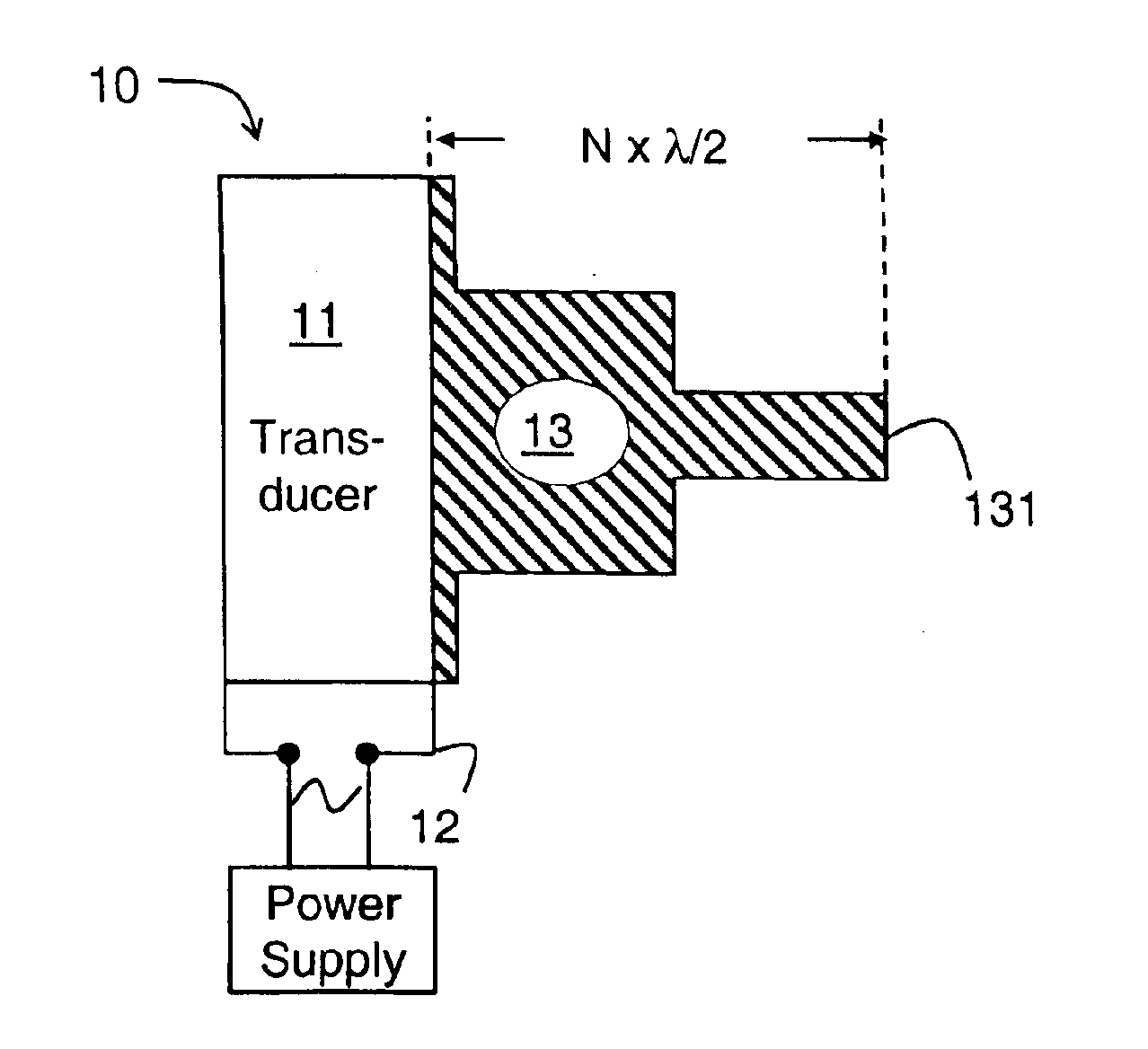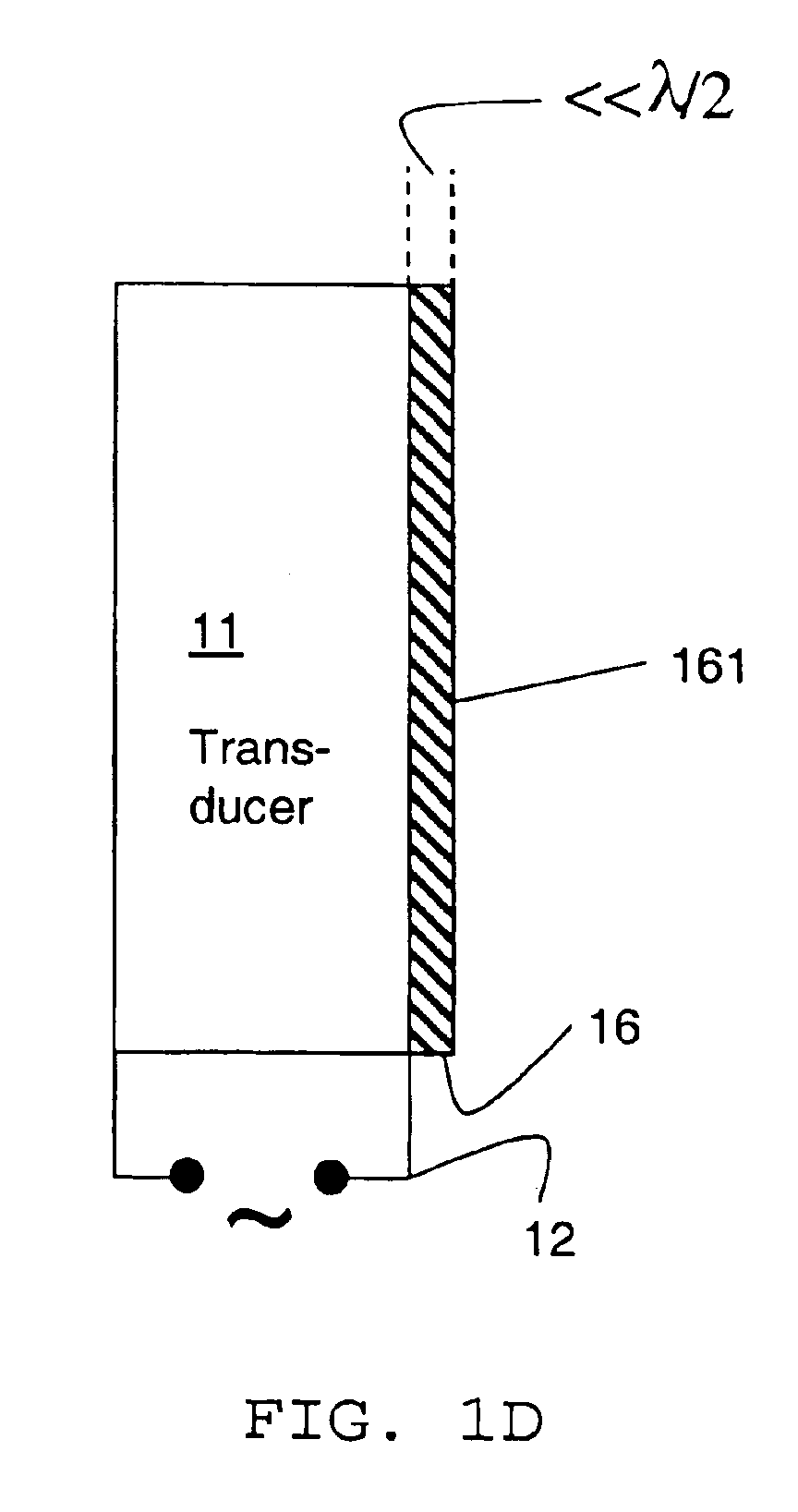Downhole deposition monitoring system
a monitoring system and deposition technology, applied in survey, borehole/well accessories, cathode-ray oscilloscope, etc., can solve the problems of inability to monitor the deposition of water in the wellbore, the tubing of a producing hydrocarbon well can be a major and costly problem, and seriously impede the productivity of the well, so as to increase the thickness of the deposi
- Summary
- Abstract
- Description
- Claims
- Application Information
AI Technical Summary
Benefits of technology
Problems solved by technology
Method used
Image
Examples
Embodiment Construction
(I) Acoustic Scale / Deposits Sensor
[0045]The scale (or deposits) sensor consists of an ultrasonic piezoelectric transducer operating in a longitudinal mode coupled to a suitable metal horn. The resulting ultrasonic device is characterised by a sharp resonant frequency, which can be conveniently determined by the measurement of the admittance (or impedance) spectrum of the device. The resonance frequency of the appropriate longitudinal mode is sensitive to any solid deposit that forms on the tip of the horn and the magnitude of the frequency shift is a measure of the mass loading. These ultrasonic transducers typically operate in the frequency range 10-100 kHz and can deliver high levels of acoustic power, typically in the range 1-500 W, when driven by a high input alternating voltage at its resonant frequency.
[0046]FIG. 1 shows schematics of several types of acoustic horn attached to an ultrasonic transducer. The basic elements of the scale deposit sensor 10 are a transducer 11 made ...
PUM
| Property | Measurement | Unit |
|---|---|---|
| resonance frequency | aaaaa | aaaaa |
| resonance frequency | aaaaa | aaaaa |
| thickness | aaaaa | aaaaa |
Abstract
Description
Claims
Application Information
 Login to View More
Login to View More - R&D
- Intellectual Property
- Life Sciences
- Materials
- Tech Scout
- Unparalleled Data Quality
- Higher Quality Content
- 60% Fewer Hallucinations
Browse by: Latest US Patents, China's latest patents, Technical Efficacy Thesaurus, Application Domain, Technology Topic, Popular Technical Reports.
© 2025 PatSnap. All rights reserved.Legal|Privacy policy|Modern Slavery Act Transparency Statement|Sitemap|About US| Contact US: help@patsnap.com



